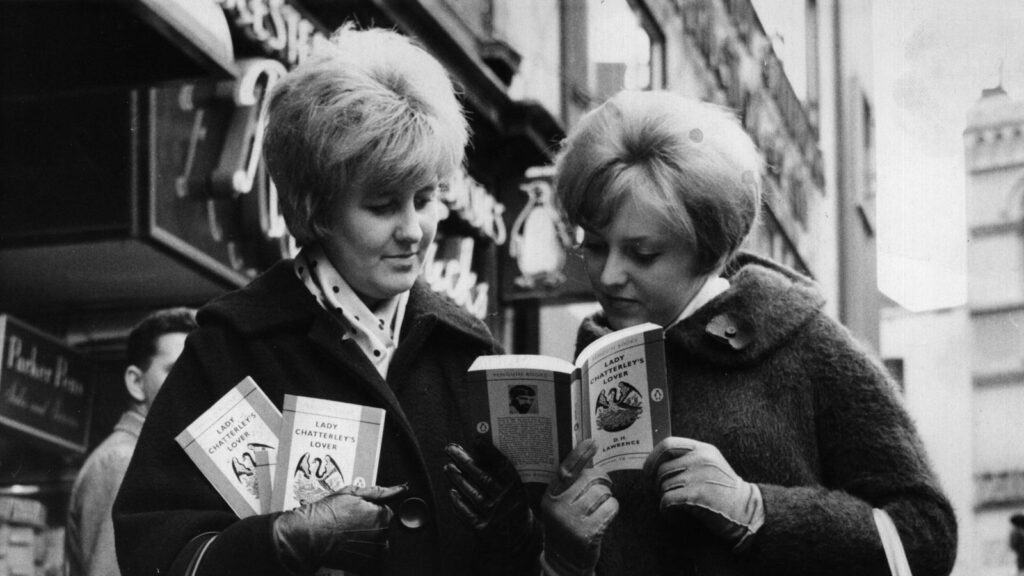
Growing Up: Sex in the Sixties
Peter Doggett, The Bodley Head, 400 pages, £25.00
KEN BELL finds a survey of Sixties sex is really about 2020s attitudes
In Annus Mirabilis, Philip Larkin reflects famously:
‘Sexual intercourse began
In nineteen sixty-three
(which was rather late for me) –
Between the end of the Chatterley ban
And the Beatles’ first LP.’
Britain in 1960 was still a country that belonged to its past, and a time traveller from the 1930s would have felt very much at home there. However, Britain in 1970 had become a country that looked to the future with great optimism and really seemed to be casting off its uptight and censorious past. Cultural historian Peter Doggett’s Growing Up: Sex in the Sixties casts a jaundiced eye over the decade and argues that it was all very bad indeed. That is not to say that Doggett is a full-blown fan of Mary Whitehouse, but he does treat her with far more respect than she ever deserved.
The 1960s was a disruptive decade where the future collided violently with the past, and the future won hands-down. That victory owed a lot to the contraceptive pill that was introduced in 1961. If you want to know why the Sixties swung, much of it was due to the fact that young women could have sex without fear of their actions having untoward consequences. Doggett does not mention this crucial point, but seems to take the view that women were generally victims of the decade, rather than liberated by it.
Growing Up is divided into twelve chapters, and three of them are devoted to looking for, and finding very dubious evidence of, the growth of underage sex. Most of these chapters are concerned with Vladimir Nabokov’s novel, Lolita, which was first published in the UK in 1959 by Weidenfeld & Nicolson, a publishing house not noted for pornography. The publication was controversial, but no attempt was made to prosecute the publishers; that had to wait until 1961 when Penguin was unsuccessfully prosecuted for publishing Lady Chatterley’s Lover.
Lolita was left alone because there are no sex scenes in it, unlike Lady Chatterley’s Lover. Both novels are fine literature, but Lolita is one of the greatest works of the twentieth century, and even the Director of Public Prosecutions wasn’t going to go up against a literary work, published in hardback by a major house, which had the support of most of the literary figures of the day. It is hardly Nabokov’s fault that the title of his novel became a code-word for underage sex. Had Lolita never been written then something else would have emerged to provide the key word that putative punters of such material would use to find what they were looking for.
The growth of underground pornography of all types in the sixties owed very little to Nabokov and a lot to another bit of disruptive technology, in this case the Xerox 914 photocopier that was introduced in 1959. It was a brute of a machine that weighed a hernia-inducing 648lbs, but it was a gift to the Soho publishing trade that until then had relied on Gestetner duplicating machines. The one-man aficionados of a particular kink also took advantage of the Xerox 914 to increase the output of their newsletters which they advertised in magazines such as Exchange & Mart. The machines were very expensive, but plenty of companies set up shop to cater for small businesses that needed photocopies and, in Soho especially, they were not too interested in what they copied so long as payments were made in cash.
From young girls, Doggett moves to young women, who are little more than the victims of men’s wickedness in his eyes. He has hunted down a series of nasty murders and assaults and presents these as somehow typifying the decade. Actually, far more typical of the period was women’s new power to control their own fertility thanks to the contraceptive pill, coupled with the liberation of Vidal Sassoon’s geometric haircut and the miniskirt. These things taken together gave young women the confidence to throw off their mothers’ iron perms and passion-killing corsets.
Homosexuals were also victims in this period, according to Doggett, who devotes far too much space to people who were peddling cures for that predilection. Yes, they existed, but by the end of the decade, homosexuality had not only been decriminalized, but pubs and nightclubs that were known to cater to a homosexual clientele were operating with only minimal interference from the police or the licensing magistrates.
Disruptive eras are untidy and often chaotic and the Sixties had all that, and more. Yet, by the end of the decade, Britain was groping towards a new consensus where adults felt much freer socially than they had at the start of the period. The author simply ignores the social liberation that became accepted after the decade, and concentrates only on the reactions to it during the era. In the end, his work is more about present day beliefs than the decade when suddenly everyone seemed to be getting it on.
KEN BELL is a Mancunian who fetched up in Mexico, and who now lives in shabby retirement in Edinburgh. He writes as a hobby in his twilight years; a fuller biography can be found at his Amazon author page